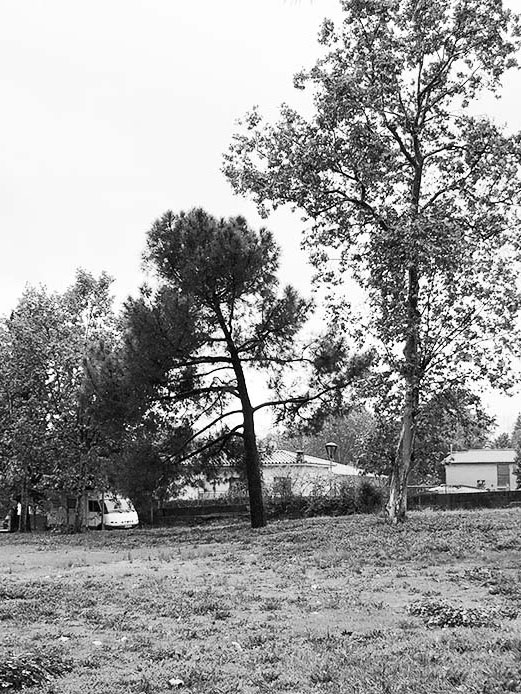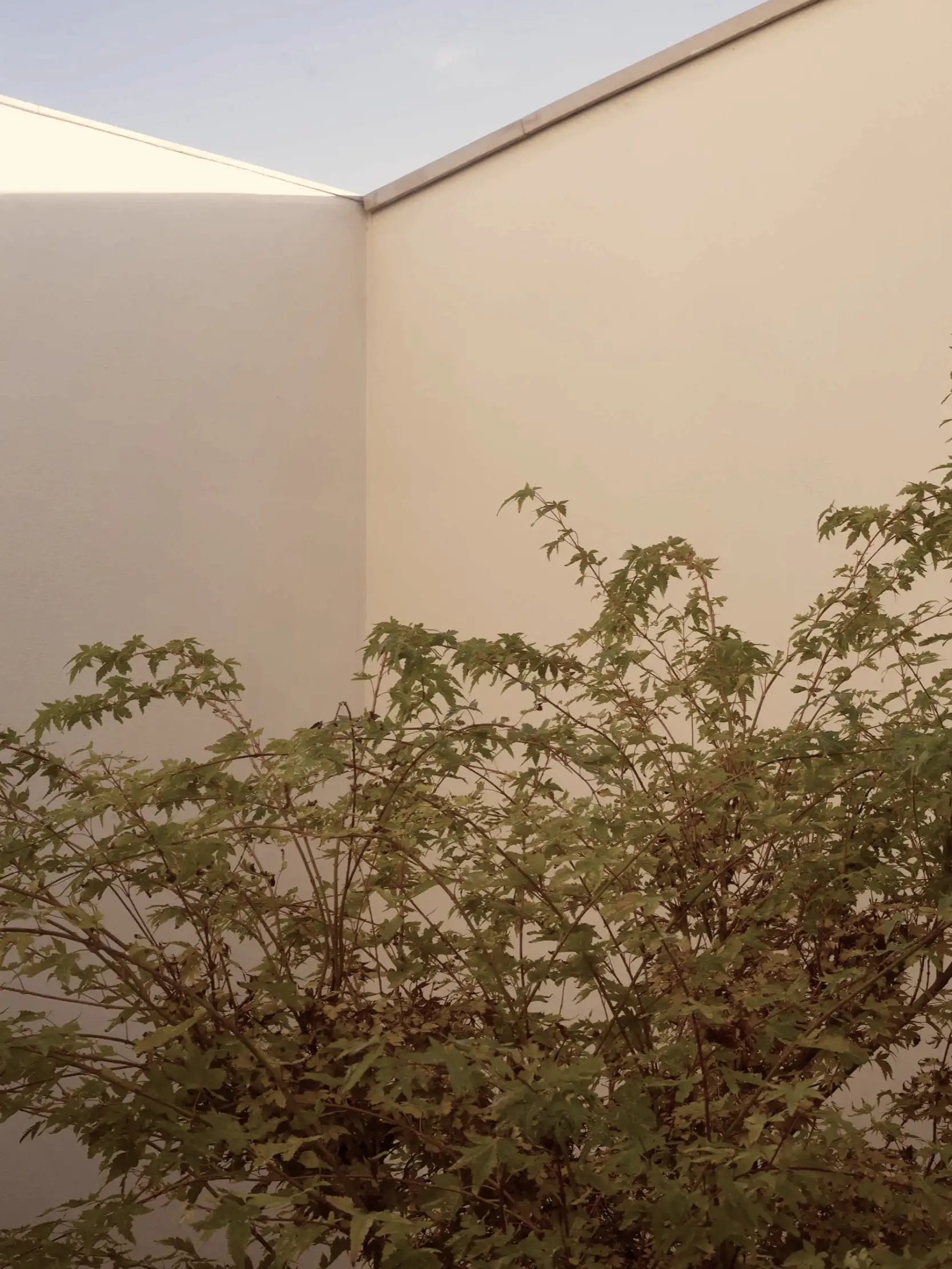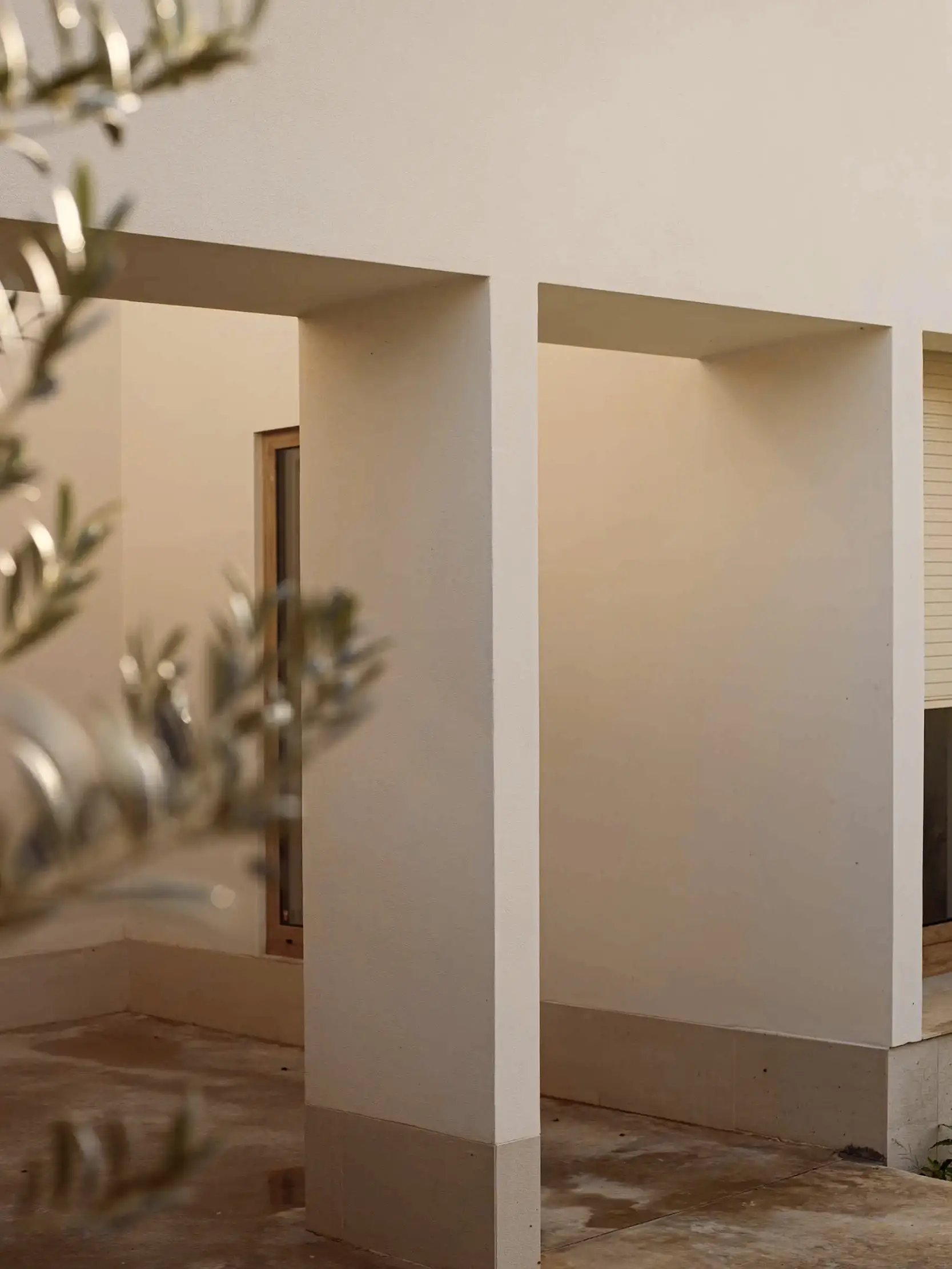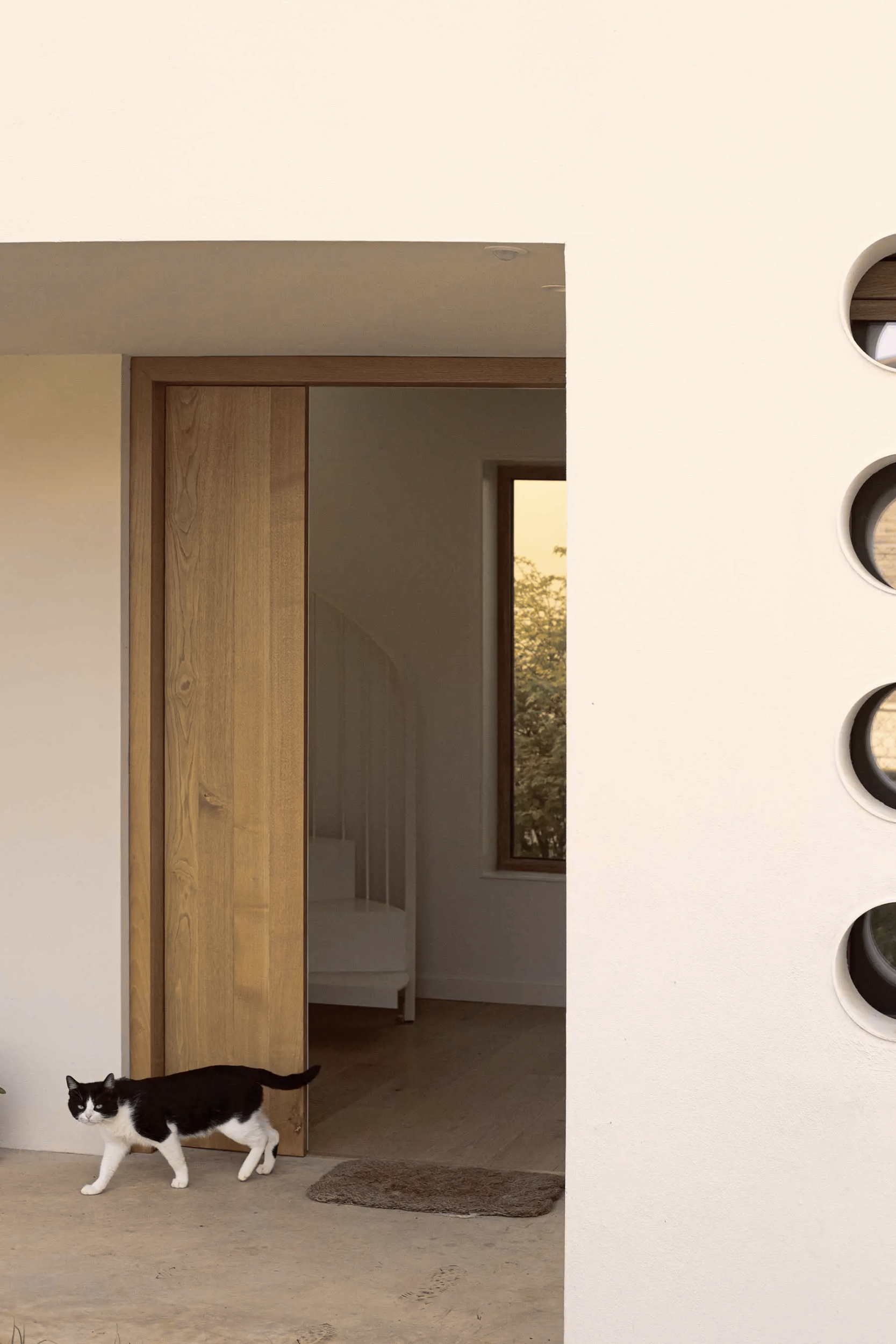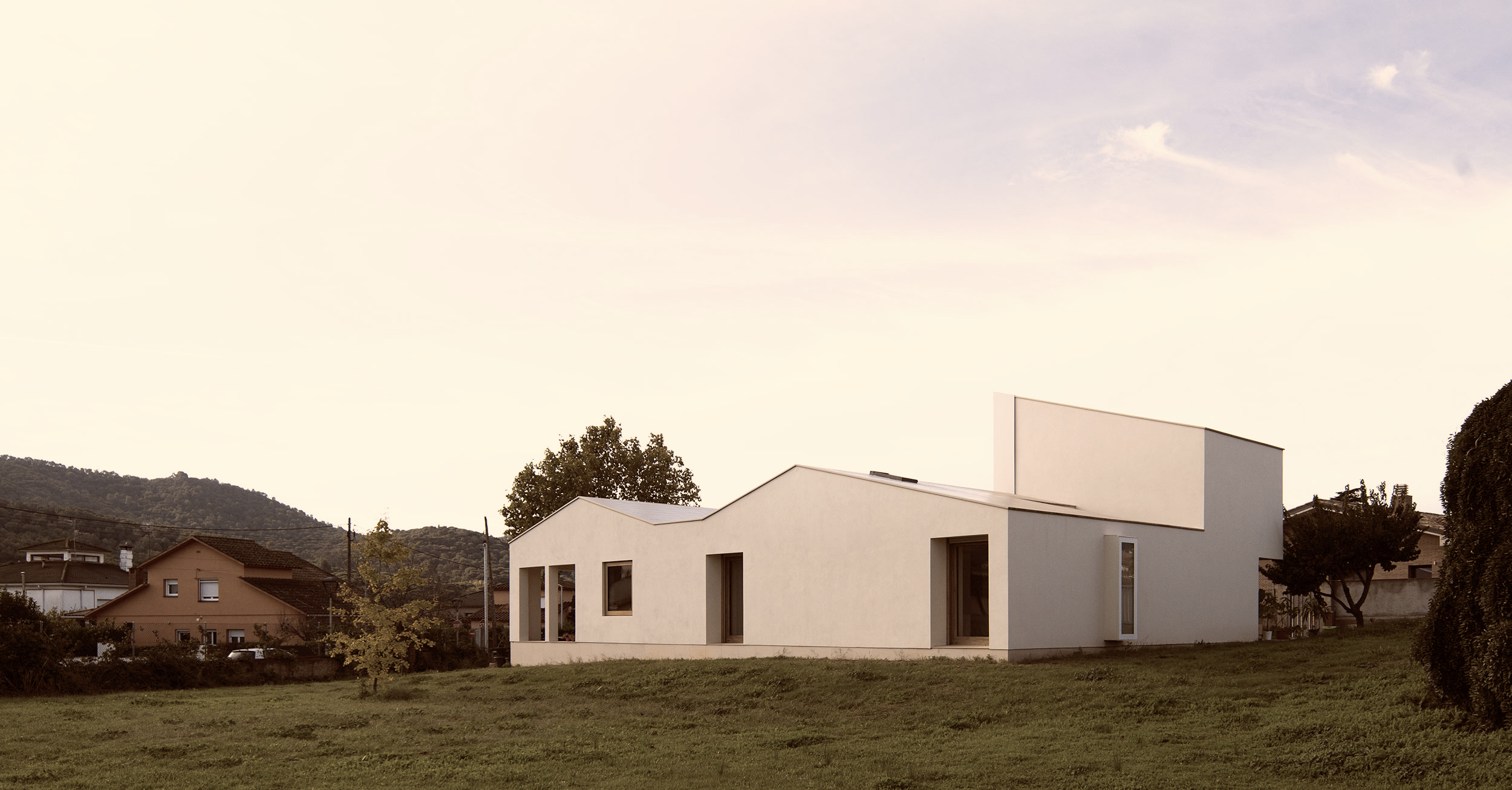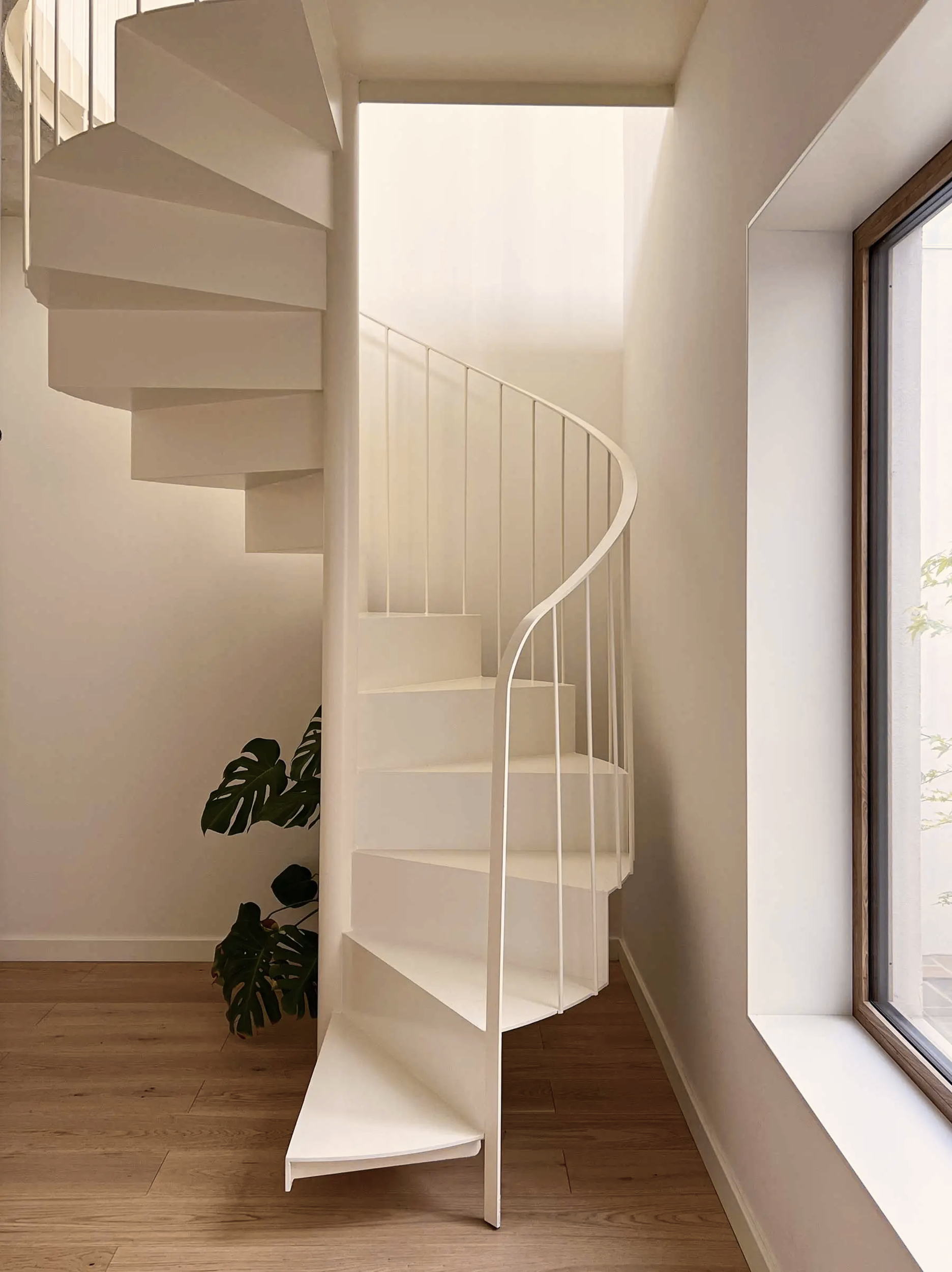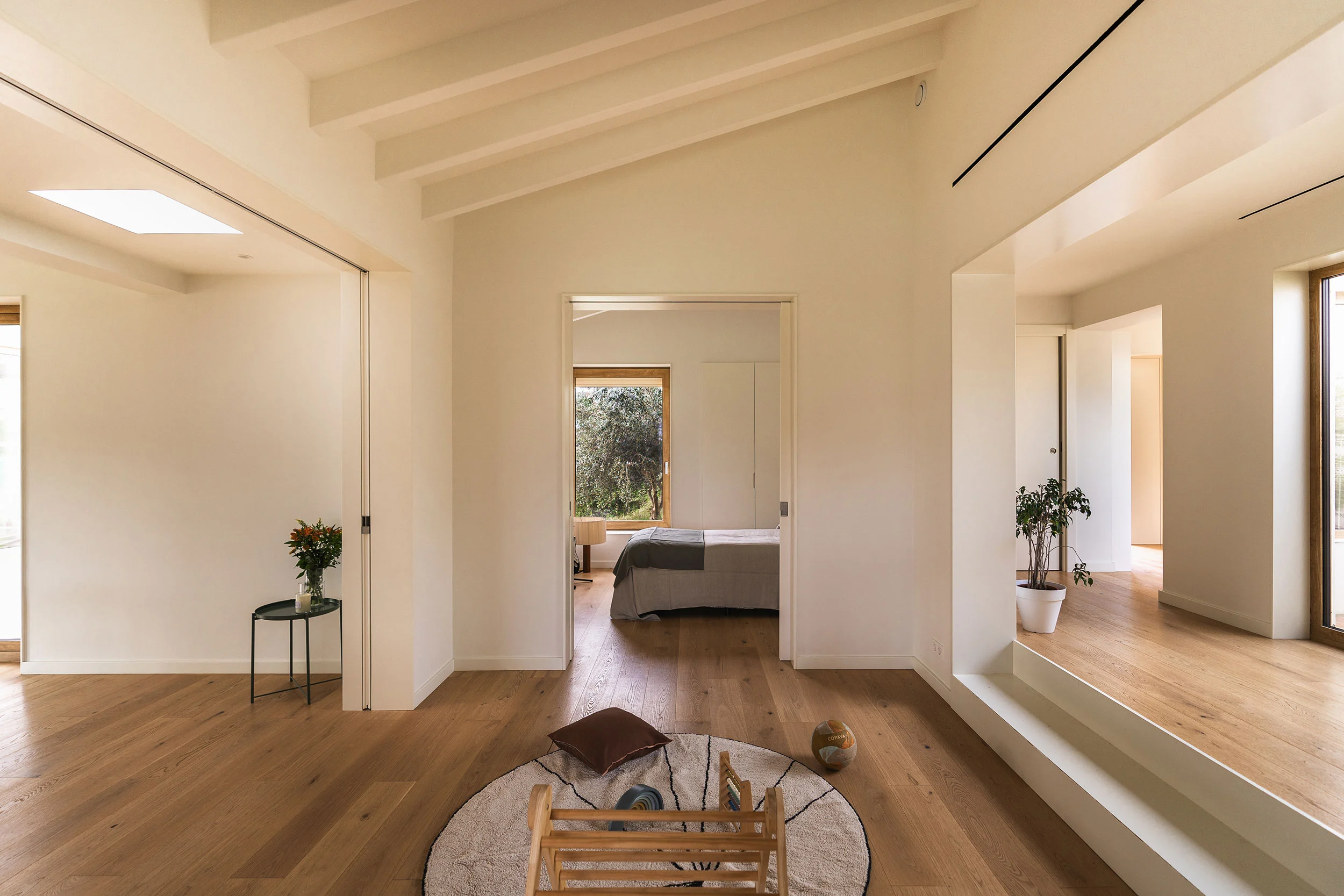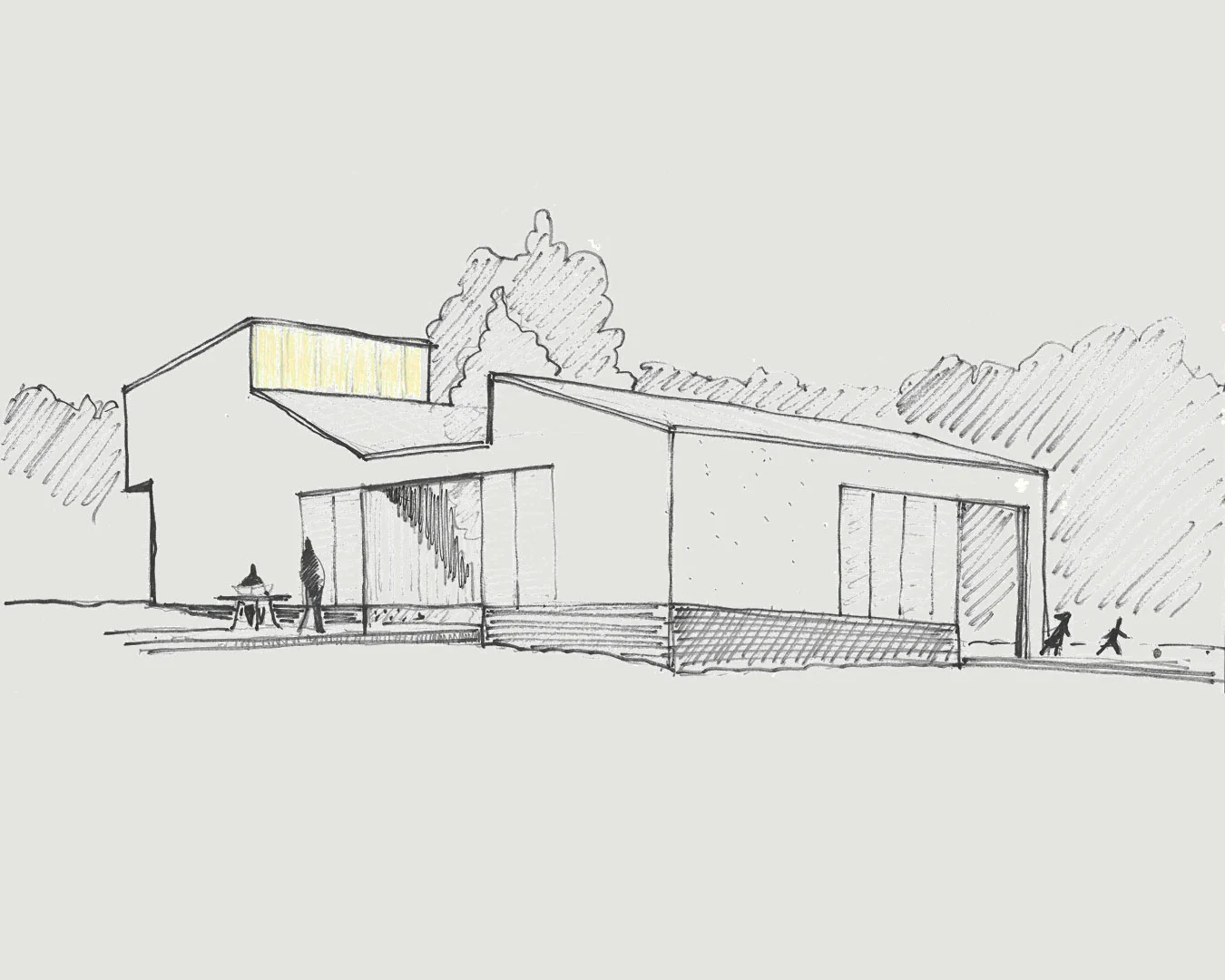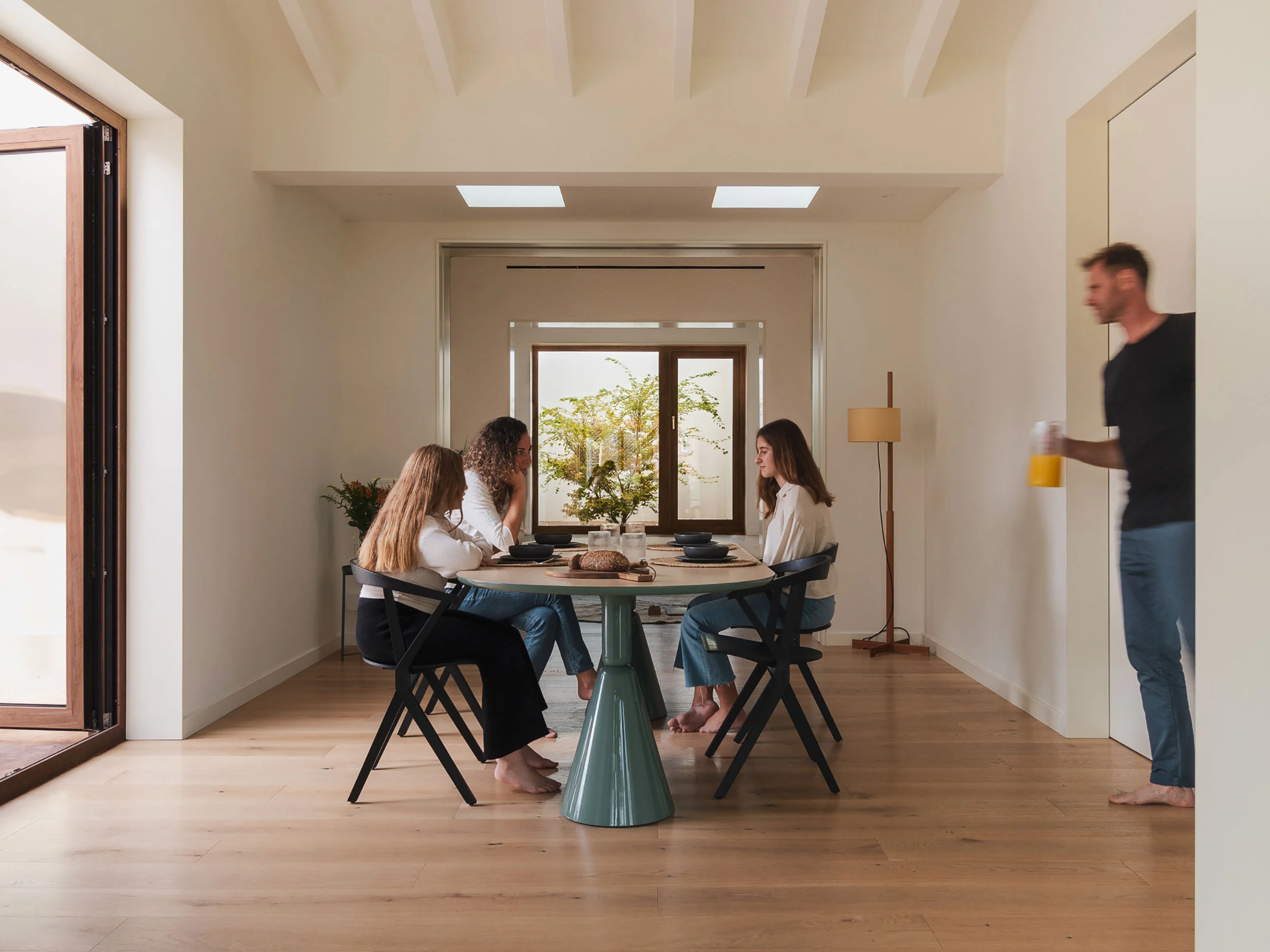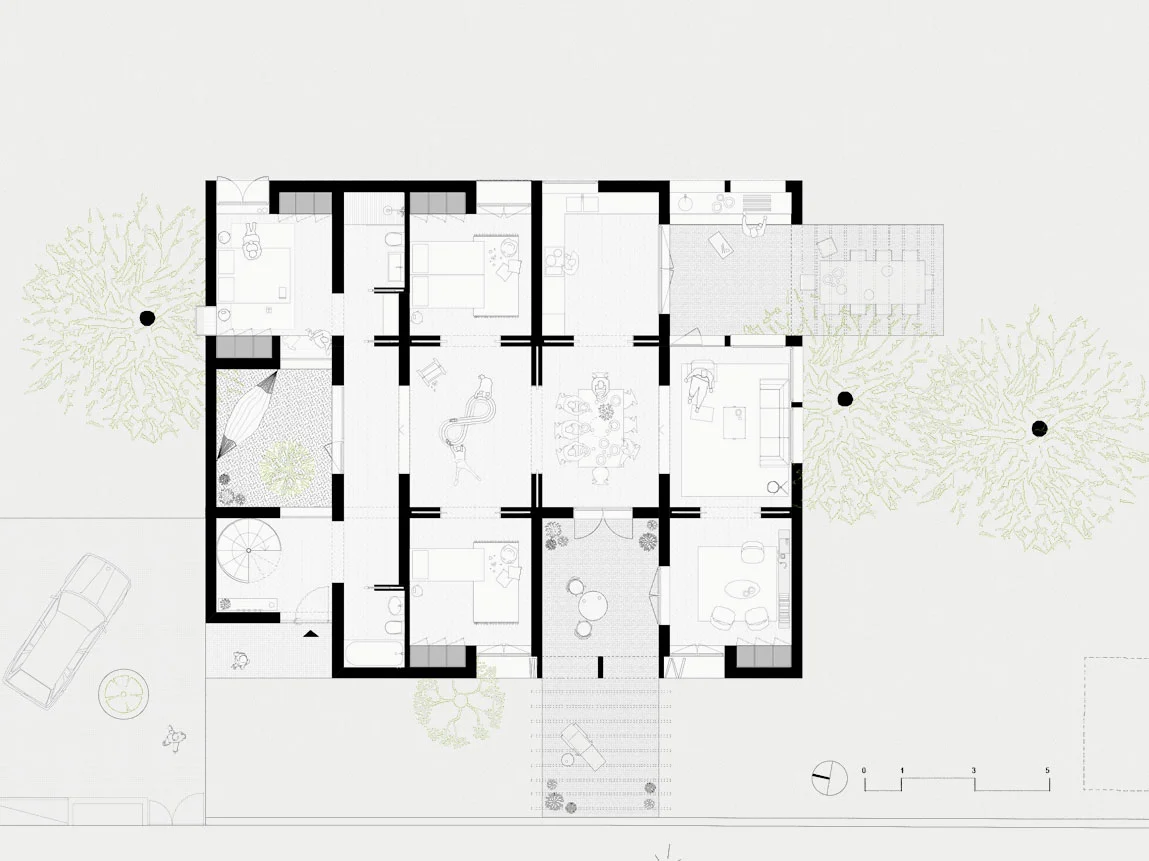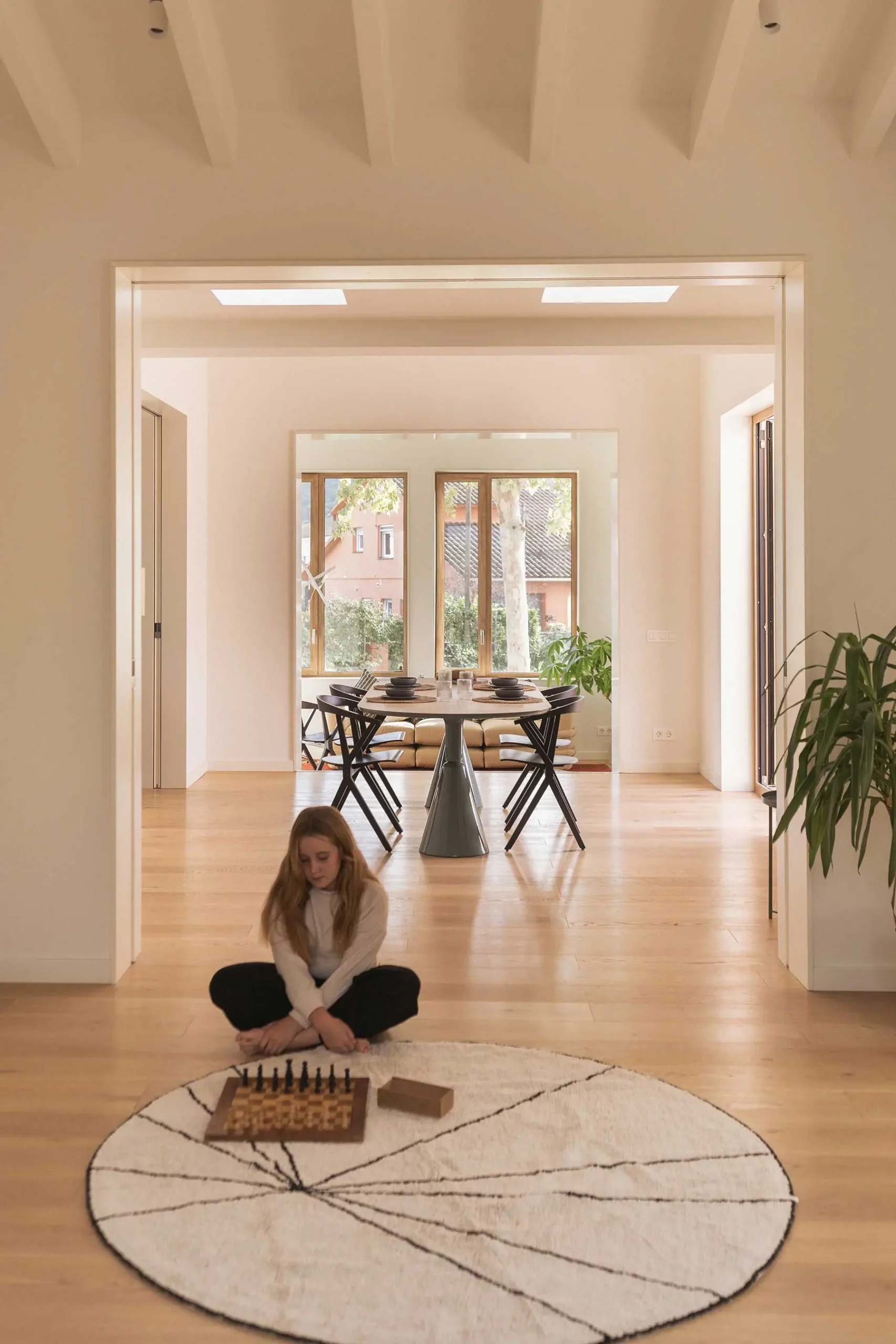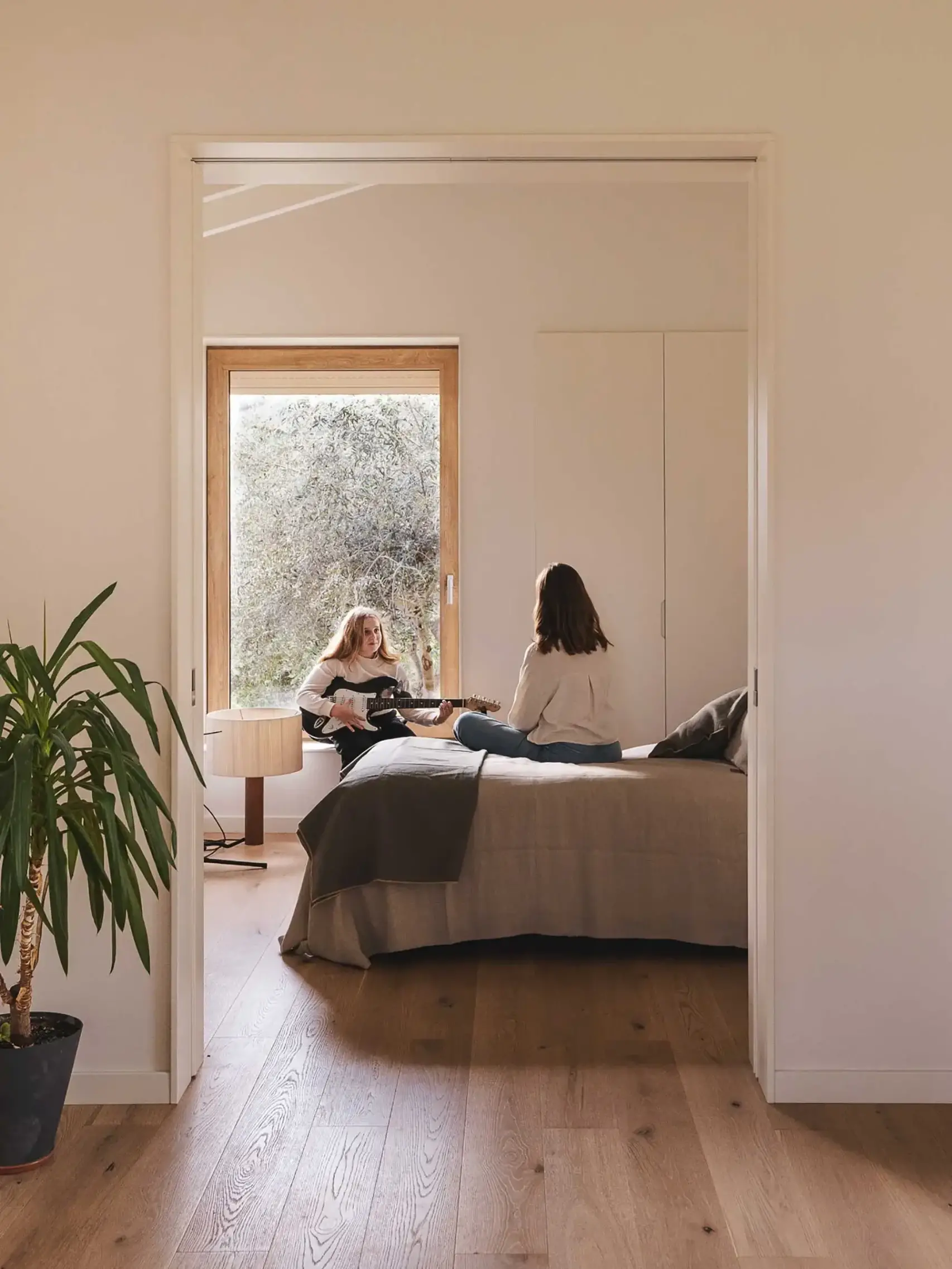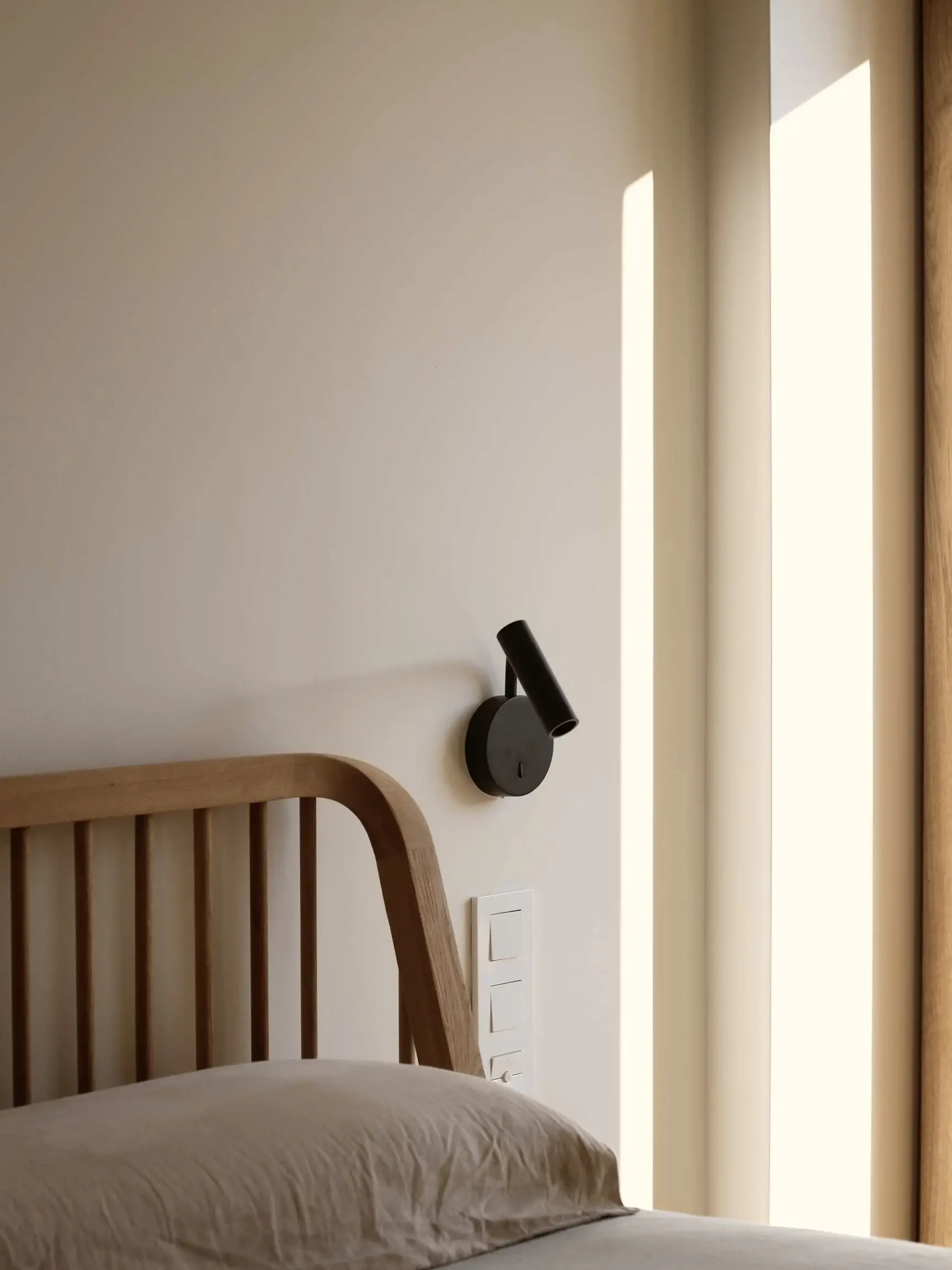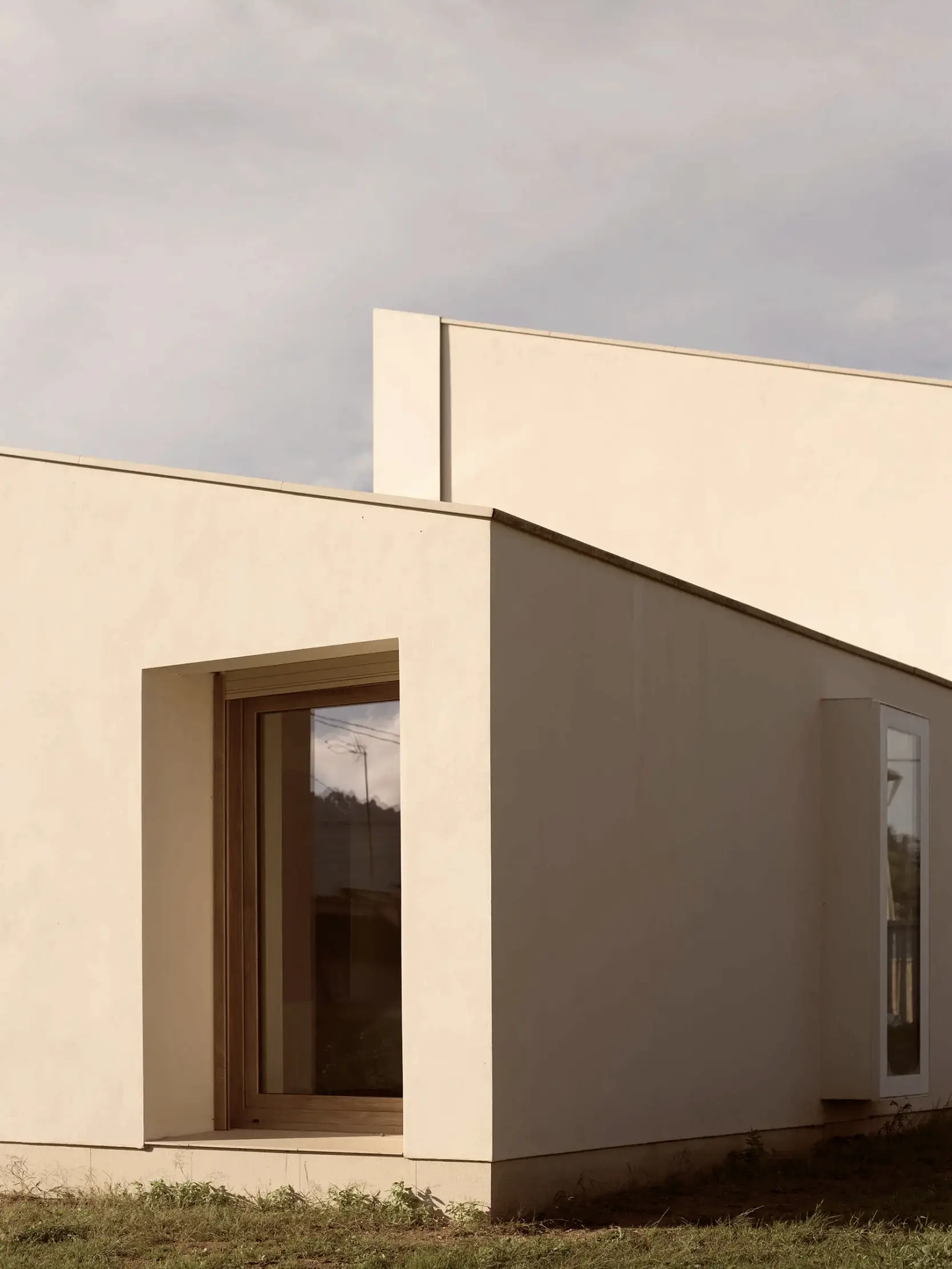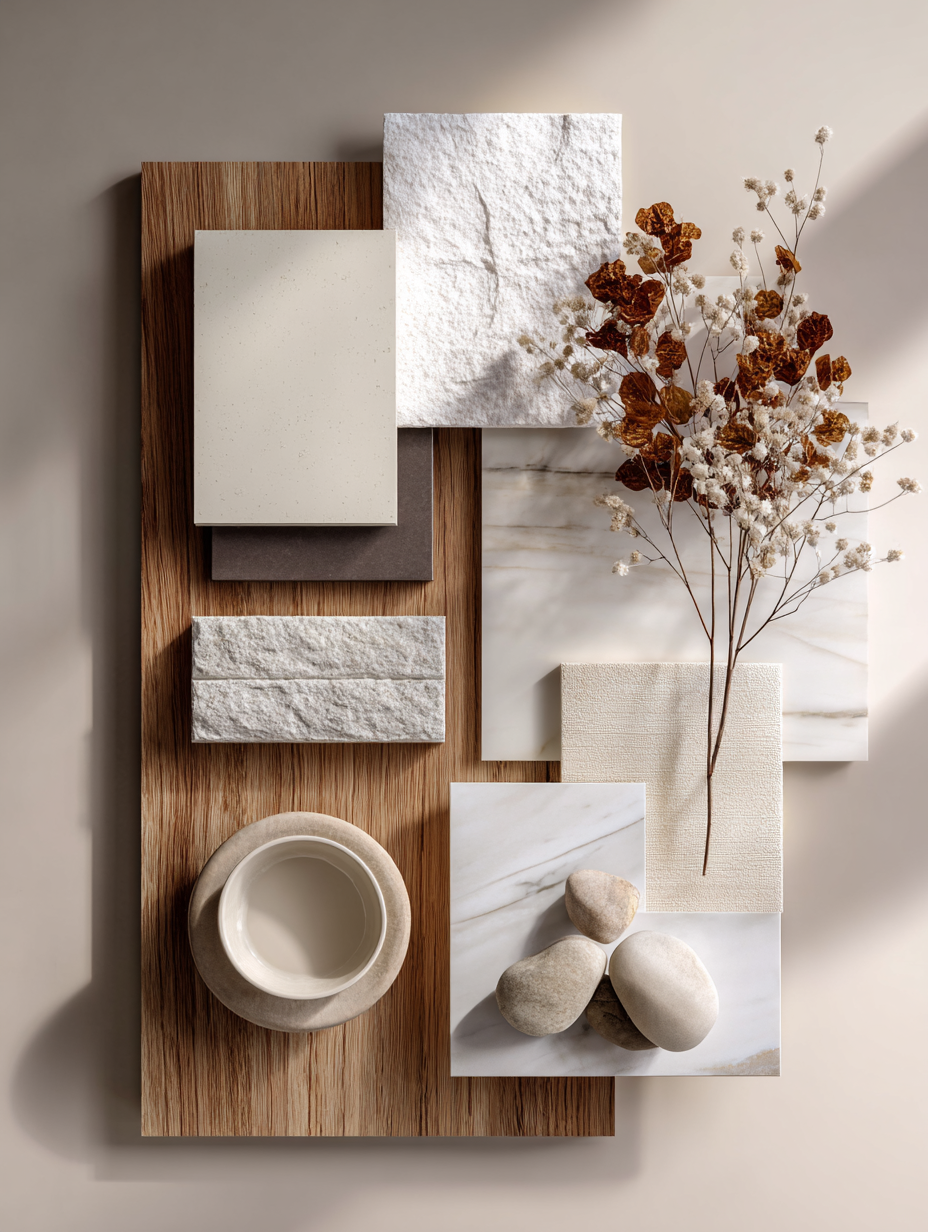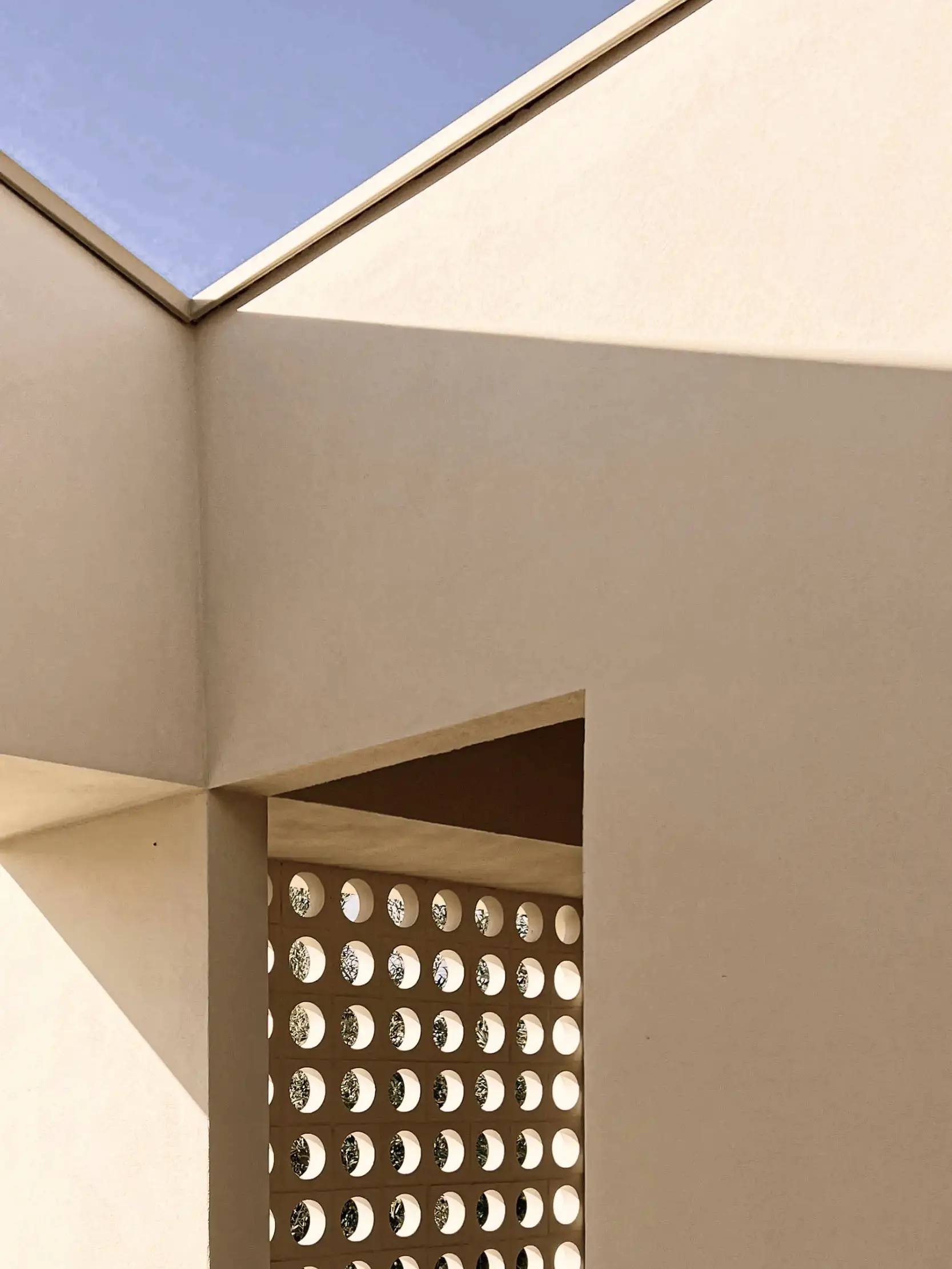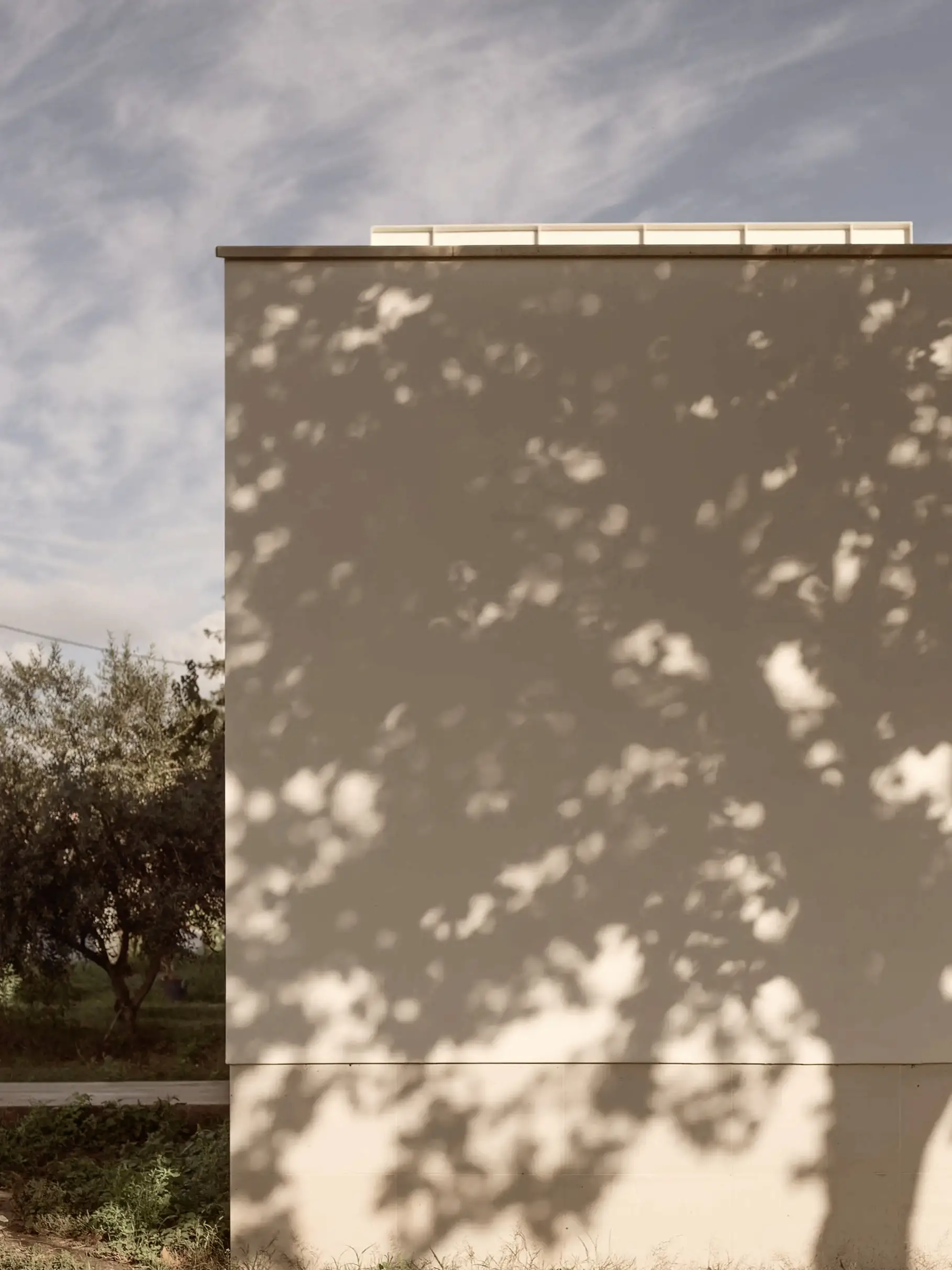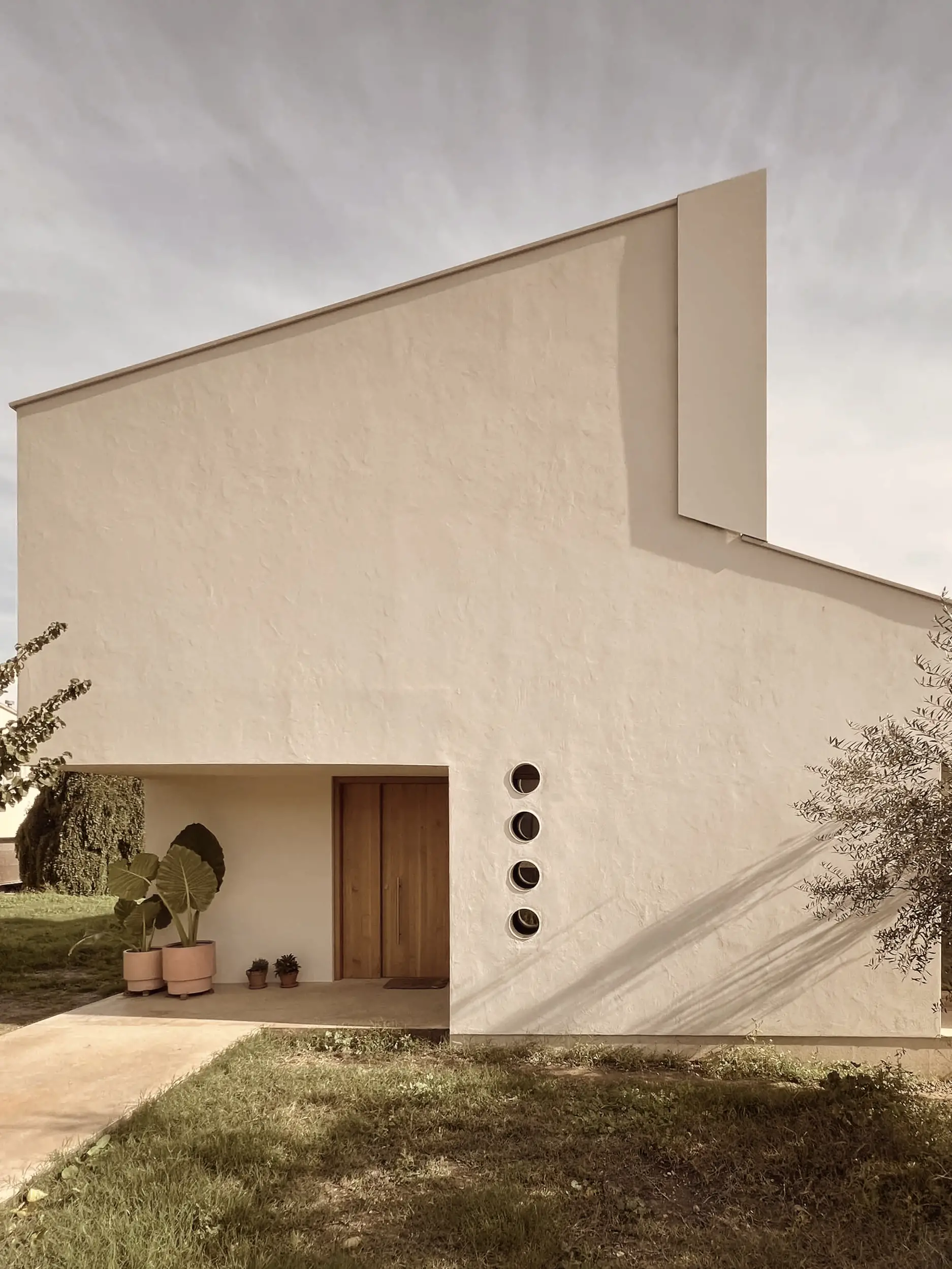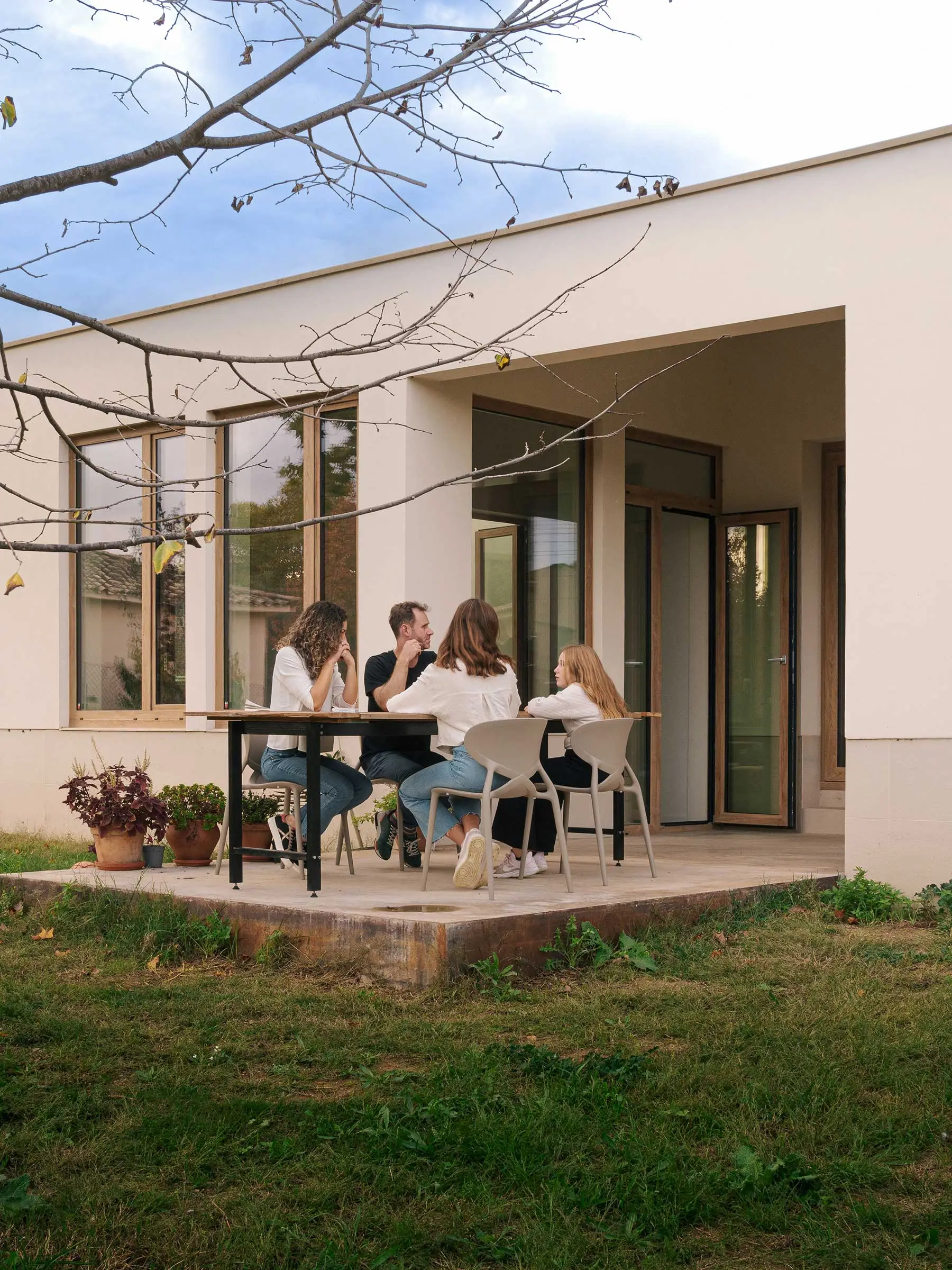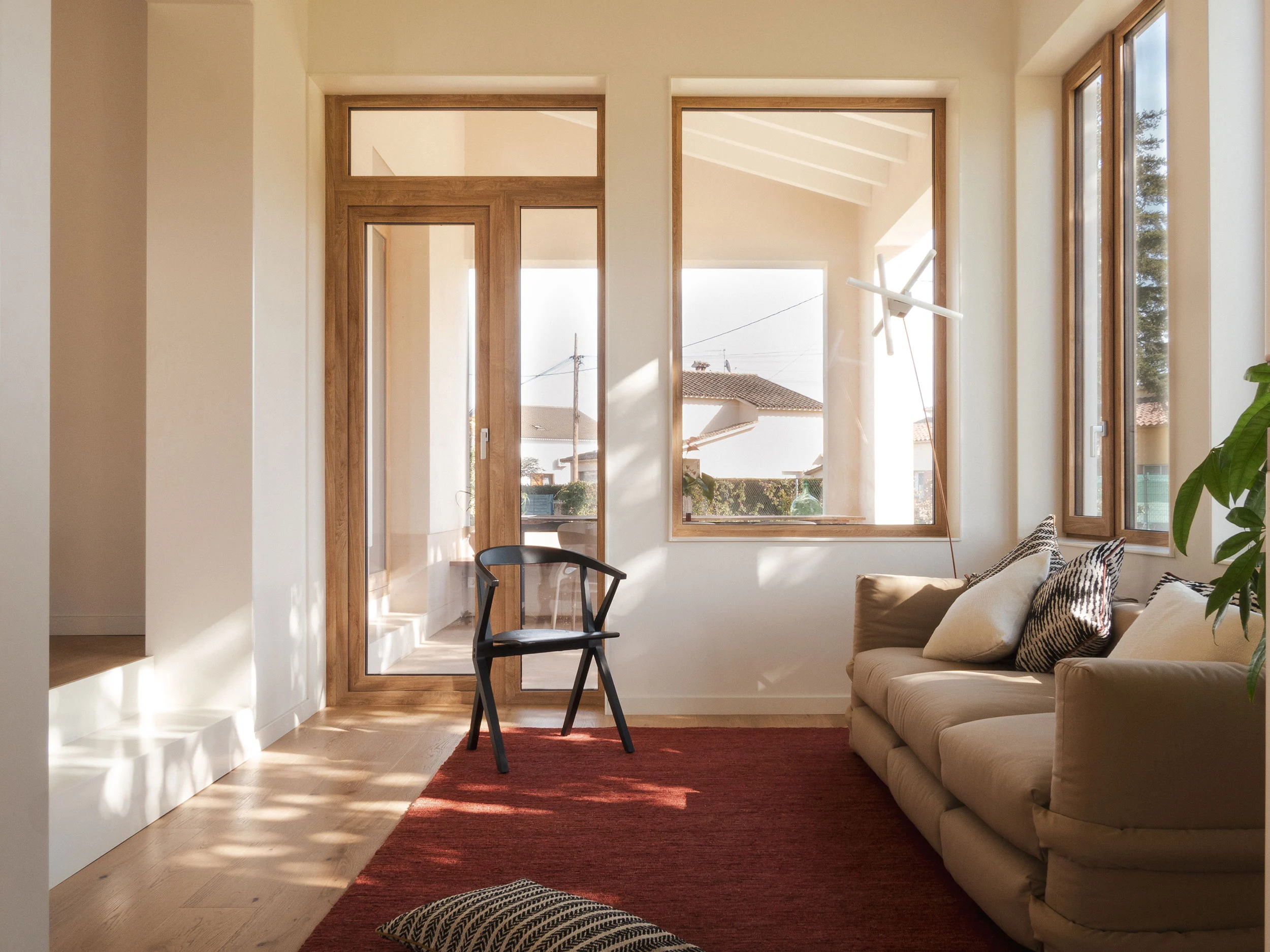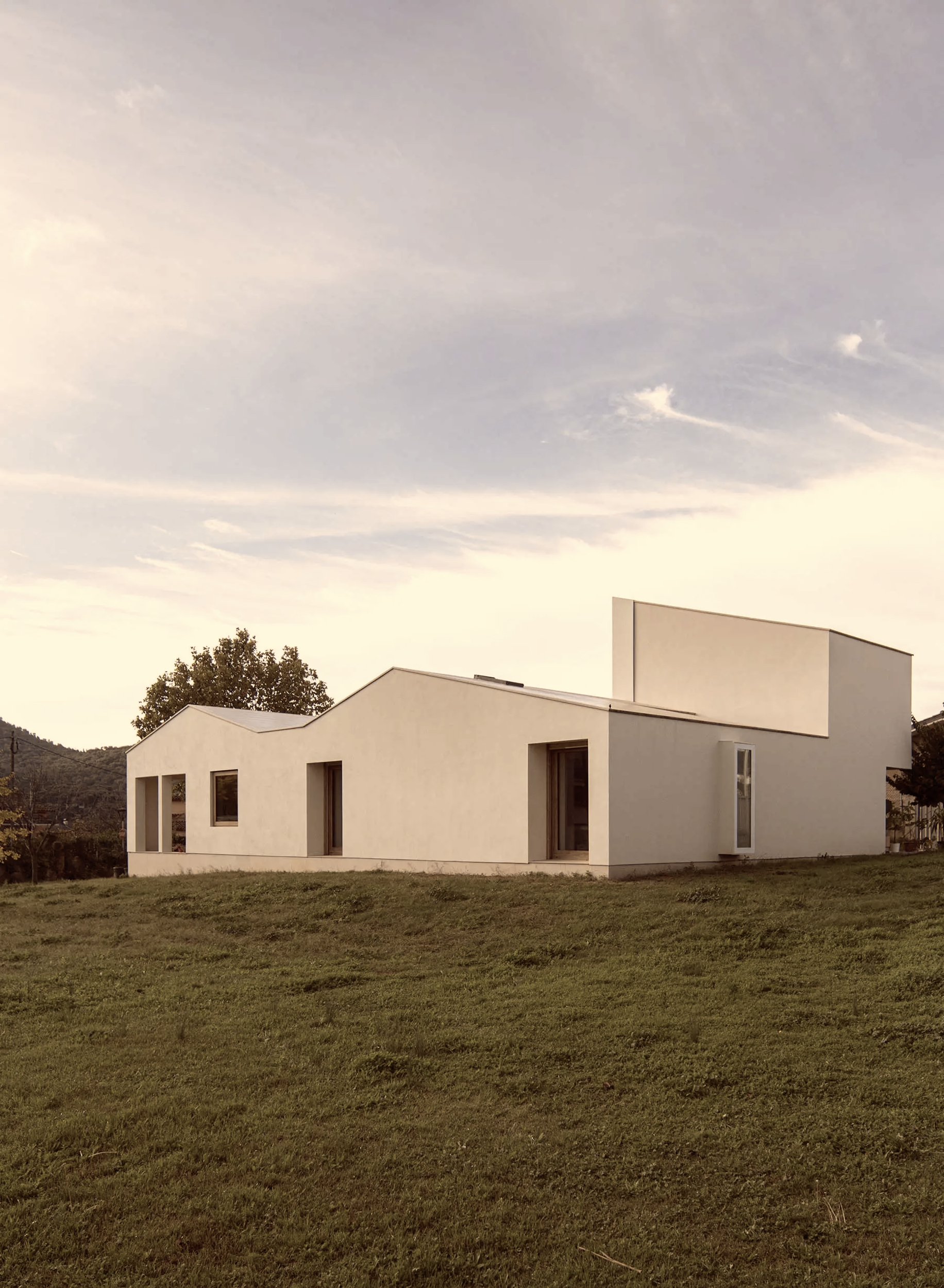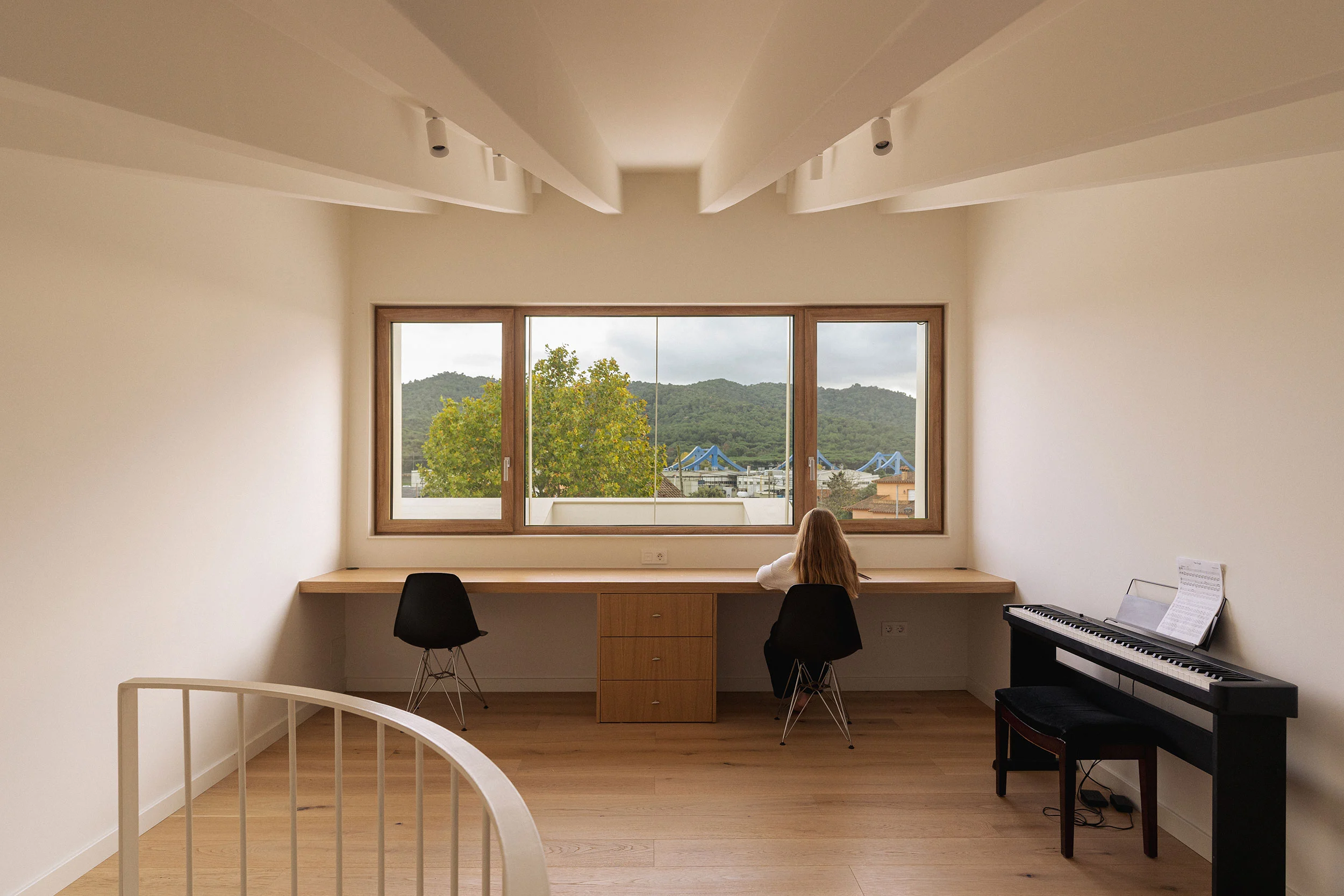Location
Llinars del Vallès, Barcelona
Category
Residence
Photography
Grey Matter, Fem
Year
2025
On the rising edge of Llinars del Vallès, where the cultivated plains begin to yield to forested hills and the distant folds of the Serralada Prelitoral define the horizon, a house rests with quiet confidence. Its presence is neither dominant nor self-effacing—it belongs. Zig-Zag Hill House, designed by Fem Arquitectura, draws its identity from the land itself. From a gentle crest on a small hill, it observes the world in slow motion: orchards, rooftops, pine forests, seasons, clouds.
This site is more than a backdrop. It shapes the architecture, defining its orientation, geometry, and experience. The house responds not with a gesture of contrast, but with continuity. It is grounded in the topography and informed by the rhythms of sun, wind and shadow.
From afar, the house reads as a collection of pitched volumes, rhythmically stepped along the slope. The white stuccoed façades and ceramic-tiled roofs reflect the light in soft gradients, making the house appear both sculptural and subdued. At its base, a zócalo of creamy stone anchors the entire composition, tracing the terrain’s highest point and establishing a horizontal datum that frames the house’s relationship to the hill.
This base is more than structural—it is a line of equilibrium. It sets the tone for an architecture that is both essential and deliberate, expressive yet restrained.
Before there was a house, there was a rhythm: the slope, the trees, the silence. The architecture did not arrive to transform this—only to listen, align, and follow.
There is no urgency here. Just light, wood, and a rhythm of arrival that slows the day down and invites you to inhabit time more softly.
Beneath its modest silhouette, the house is the product of rigorous reduction. Fem Arquitectura have worked with an essentialist mindset—where everything that remains has purpose, tactility, and permanence.
Built with load-bearing masonry walls, the structure is both straightforward and lasting. The gabled forms that crown each section are not decorative—they mark internal shifts in use and orientation. Their repetitive rhythm, slightly rotated and displaced, gives the house its gentle zig-zag movement, like a drawing folded along the slope.
The zócalo—made of warm, cream-coloured stone—does more than adapt to the terrain. It acts as a continuous bench, a base that resolves the topography and offers a visual order to the fragmented geometry above. Above it, the lime-stuccoed walls introduce subtle texture and light play throughout the day.
Inside, the palette is even more reduced: oak flooring, soft white walls, wood-framed doors and windows. No ornament. No excess. Only materials that age well and feel grounded. This restraint amplifies the qualities of light and shadow, allowing time and use to enrich the space.
Sliding panels allow rooms to be opened or enclosed, depending on the season, the hour, or the inhabitants’ needs. Spaces are defined not by program, but by relation: one to another, to light, to the slope. The central hall connects all rooms, and yet doesn’t dictate their function. It is not a corridor. It is a shared space for the undefined—reading, play, silence, company.
This house doesn’t shout innovation. It offers it through clarity and softness. Through proportions, alignments, and materials that recede—so that life may emerge.
Light doesn’t flood this home—it arrives with care. Through windows oriented to the rhythms of use, it enters softly, at the right angle, at the right time. A meal feels different in the morning than it does in the evening. This isn’t accidental. It’s where function meets poetry.
Tucked above the rhythm of family life, the studio offers something different: stillness. This light-filled stair leads not just upward, but inward—toward a space for reflection, creative pause, and distant views. It is a room apart, yet deeply rooted in the house's geometry and intent.
The true story of Zig-Zag Hill House begins not in plan, but in section. From the moment you cross the threshold, the house begins to unfold—quietly, spatially, and sensorially. The entry, placed at the upper level, is modest in scale, with a slightly compressed ceiling that evokes protection and intimacy. It’s a gesture of welcome, not grandeur.
Here lie the private spaces: the master bedroom, the main bathroom, and the first corners of domestic retreat. Their scale is contained, the light measured. But rather than the house lowering its head as it descends with the hill, the ceiling height remains constant—and it is the floor that begins to fall away.
With each transition—every three-step drop—the rooms gain height, light, and breath. As the architecture moves downward with the slope, it expands inward. This creates a gentle crescendo: from low and close, to high and open. The ceiling, held at a fixed altitude, becomes a tool for spatial progression. The floor slips beneath it, and space begins to open like a lung.
By the time you reach the lower volumes—where the kitchen, living room and dining area flow freely into each other—the ceiling rises to its greatest height. These are the social spaces, the rooms where friends gather, where music plays, where life is shared more openly. And the architecture reflects that generosity with volume, light and outward view.
The experience is not only visual—it is tactile and emotional. One feels the openness increasing. The steps that separate each zone are the height of a bench. One sits, waits, converses. The levels don’t just organise—they invite. Movement becomes gentle choreography. Rooms don’t divide—they modulate. The house becomes a spatial journey that aligns with life itself: private to public, inward to outward, grounded to expansive.
This house began not with style, but with a question: what’s essential? The response was a form as simple as it is grounded—angled roofs that follow the terrain, defining space without complication. Geometry here becomes empathy, adapting gently to the landscape and to the lives it shelters.
The floor plan reflects a system, not a prescription. Spaces are modular yet fluid—open enough to host collective life, closed enough to allow retreat. This rational structure enables transformation, letting the house grow and shift with its inhabitants.
Rising subtly above the zig-zagging roofline, a single room breaks the uniform profile of the house. This is the studio—an elevated space of work, pause, and reflection. Slightly apart from the domestic flow, it offers a moment of escape without detachment.
From inside, a large picture window opens onto the horizon. The tiled surface of the roof becomes a foreground plane—shimmering in the sunlight, responding to weather, anchoring the eye before it reaches the distant folds of the Serralada Prelitoral. The scene is both expansive and grounding.
Here, one can watch the light shift across the roof throughout the day. See the passing clouds reflected in the ceramic tiles. Feel the closeness of the house and the distance of the landscape at once.
The studio is more than a workspace. It is a room for contemplation, a kind of domestic observatory. Elevated not only in position, but in atmosphere. Silence arrives differently here. Thought moves more freely.
This space, slightly detached yet visually embedded, serves as a counterpoint to the house’s more communal areas. It embodies the project’s quiet intelligence: the ability to hold multiple energies at once—intimacy and openness, solitude and community.
And it gives something rare in architecture: a moment of perspective. Over the roof. Over the land. Over time.
The house is built on a promise of calm. Its palette—wood, stucco, stone, light—reflects that commitment. These surfaces don’t demand attention; they offer grounding. And in doing so, they return the inhabitant to the centre of the experience.
“We share more now. We talk more. The house makes it easy to come together—and to disappear when you need to.
- RESIDENTS
Zig-Zag Hill House is not an object—it is a framework for living, open-ended and continuously responsive. Its greatest achievement is not formal or technological, but human. It recognises that families are no longer fixed units, but ever-shifting constellations of presence and need.
Here, children can retreat without disappearing. Meals can spill outdoors. Conversations can happen across levels. Work can occur in silence above. The architecture doesn’t impose—it enables. It creates conditions for connection, independence, and everything in between.
Its passive house principles are seamlessly integrated. The orientation captures winter sun and deflects summer heat. Walls hold warmth. Windows are placed for light and ventilation, not for views alone. Even the smallest aperture—like the north-facing window that frames a solitary tree—has purpose beyond function.
The boundary between house and garden is porous by design. Some rooms unfold into sheltered terraces, where walls end and nature takes over. It’s in these in-between spaces—where floor meets earth, where light filters through leaves—that domestic life finds its most generous scale.
Light is curated, not distributed. The architecture understands how to hold shadow. To dim. To glow. To retreat when the sun retreats. The material palette deepens with time, acquiring marks, reflections, memory. There is no gloss, no perfection—only resonance.
What Fem Arquitectura propose here is a model for contemporary living that goes beyond trends. One that respects the timeless value of restraint, the generosity of emptiness, and the importance of a space that is not yet defined.
It is a house that grows—not in size, but in meaning. That opens itself slowly. That mirrors the slope it inhabits, the horizon it embraces, and the lives it shelters.
Rooted to the earth, the house remains low and discreet. Its profile blends into the hill. Only the studio rises—almost shyly—breaking the line to reach the horizon. A small tower of thought and solitude, offering a contemplative distance from the life below.
